Richard Sennet describes the essence of proper craftsmanship as: the fluid process of deliberately setting up questions and challenges in order to solve them and increase ones skills.
This quote reminded me of so many of the wonderful TLF bakers....
The busy weeks continue in our tiny household. My partner and I both had our children staying this week with school holidays as well as her parents for a few days which allowed us to celebrate her fathers retirement. Amongst all the chaos we prepared a roast dinner and a rhubarb and strawberry tart.
This also meant fresh bread for dinner and parting gifts...
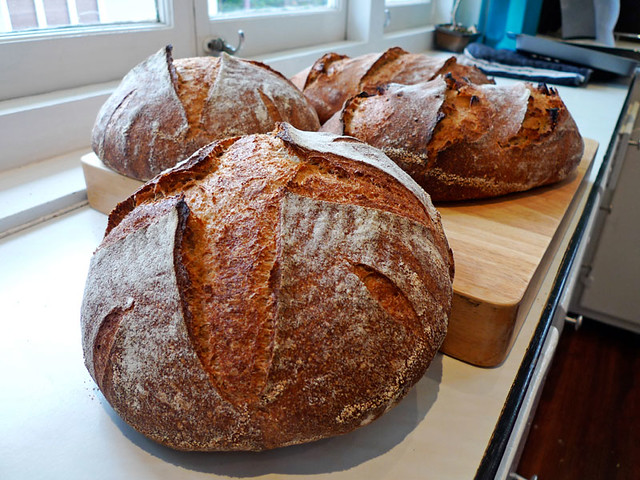
For this weeks bake I prepared two wholewheat boules and two fig and anise batards, all with freshly milled wheat.
Refreshing desem starter
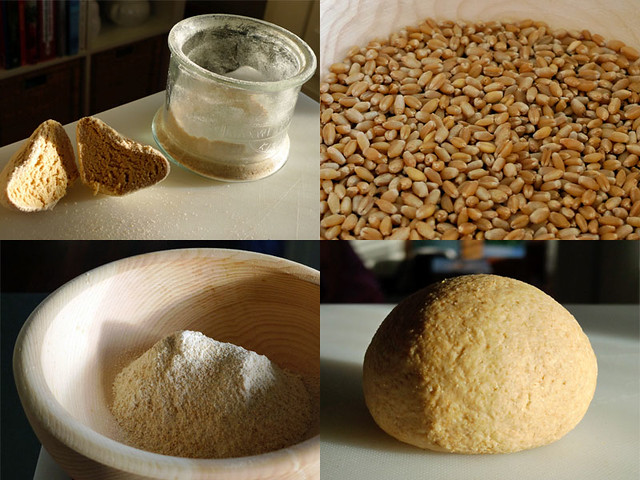
As we had so many bodies sleeping in our house I changed my usual method of milling right before mixing to allow them a more dignified morning wake up. Instead I milled the night before and added all the water and salt and soaked the fresh flour until the morning where I added the ripe starter. The same dough formula was used for both batches with the batards having extra mix-in ingrediants added during folding.
Wholewheat sourdough (with optional fig 'n' anise)
Total dough weight: 2kgs
Hydration: 85%
Prefermented Flour: 10%
DDT: 23°C
Whole wheat starter @ 60% Hydration: 175g
Wheat Flour Freshly milled: 973g
Water: 855g
Salt: 21g
Optional Mix-ins
Figs sliced: 375g
Anise seeds: 15g
Night before
Cool grains from fridge milled before being mixed with all water and salt.
Next morning
With wet hands squeeze and incorporate starter into overnight soak until smooth and feel no lumps then place in oiled see-through container (for checking dough development).
Bulk ferment roughly 4hrs with four stretch and folds 30min apart in the first 2hrs and another gentle stretch and fold at 3hr mark.
For the stretch and folds I tip the dough onto a bench which has been lightly sprayed with a water spray bottle/mister. The water stops dough sticking and I can give it a really good letterfold before placing back in container.
Optional: Figs and anise are squeezed through dough after 2nd stretch and fold.
Watch temperatures and dough like a hawk nearing the end of bulk ferment...I sometimes cut it short by half an hour if he dough is starting to move to quickly.
Preshape and bench rest 20 min before gentle shaping. Shaped dough placed into bannetons with floured cloths.
Adding mix-ins and bench resting wholewheat

Final proof for wholewheat boule was roughly 1.5hrs at room temperature (23°)
Fig and anise proofed in fridge for 3hrs and was baked directly from fridge.
Bake boules in dutch oven at 250°C for 20mins then dough removed from dutch oven and baked at 20mins at 200°C directly on stone for thoroughly browning.
Batards were baked on stone with steam for first 10mins at 250°C then 200°C for 30mins.
Wholewheat boules
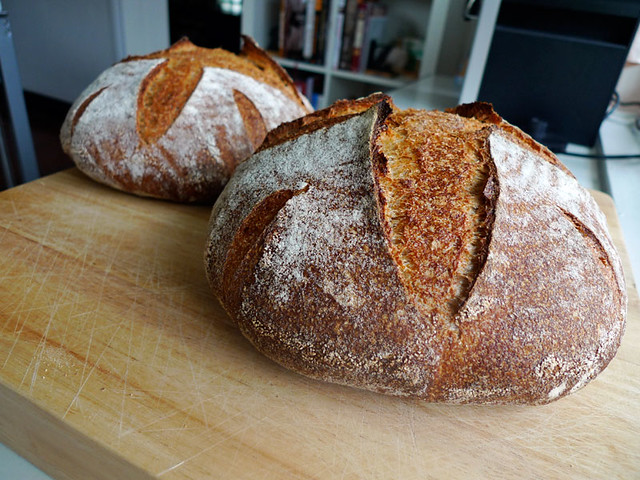
Wholewheat crumb
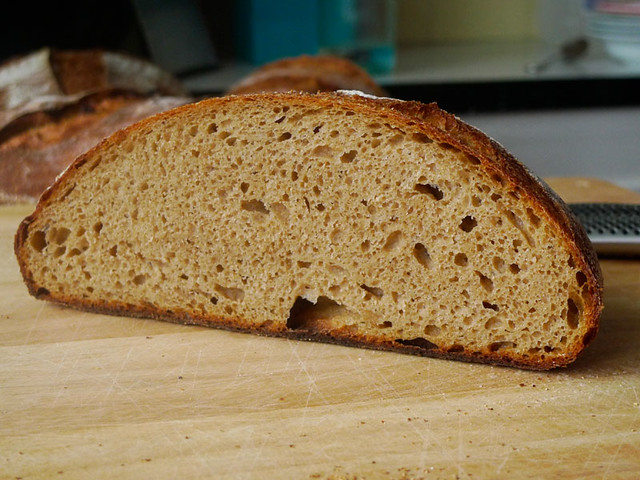
Fig and anise batard
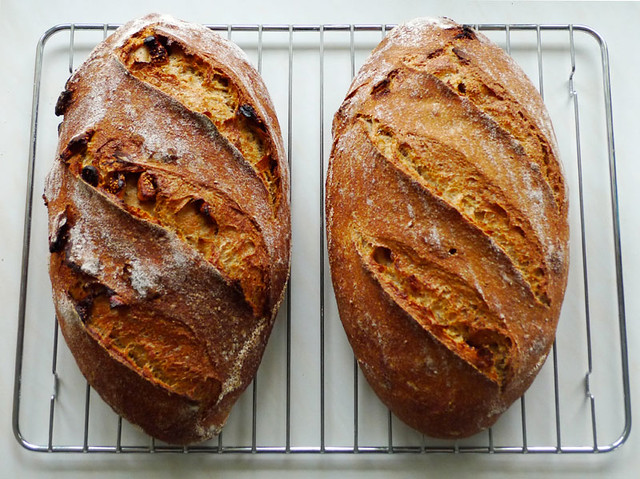
Fig and anise crumb
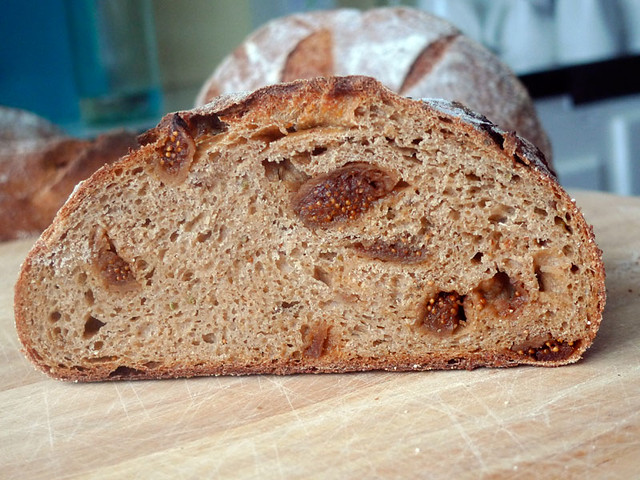
Breads were very well received and performed admirably at soaking up gravy...my roast was swimming in it :) The dutch oven really does give theses wholewheat breads the perfect crust....
The overnight soak is something I may use more often with my only issue being that it could be a little difficult to control dough temperatures. I can't say I have noticed any real difference with the bread itself using this method....just another handy option to have.
All the best
Phil